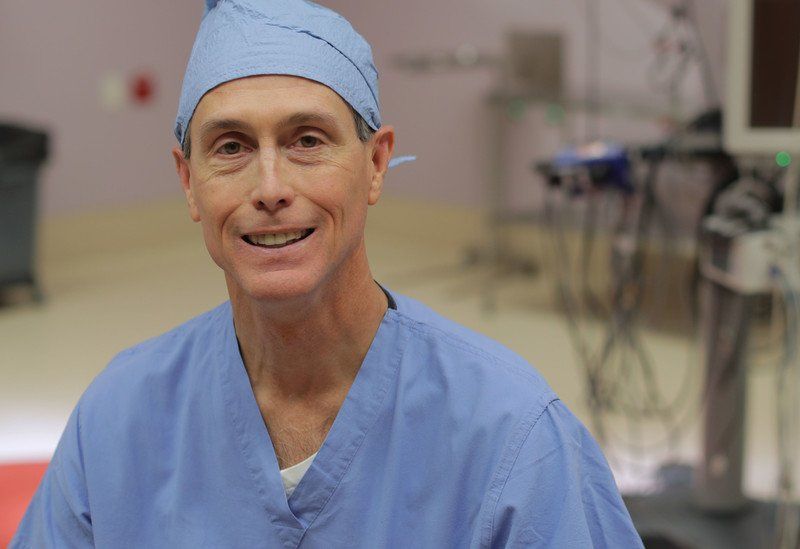AS LONG AS THERE HAVE BEEN MEN OVER THE AGE OF 50, there likely have been problems with benign prostatic hyperplasia (BPH), as well as its symptoms and complications. The history of this malady is recorded back to ancient times, but the first person credited with attempting to correct the problem surgically was LaFaye, who in 1756 used a lance-shaped stylette to blindly open a patient’s prostatic channel. Poor patient!
Many others have followed with their own unique methods for attempting to relieve obstruction—with some intimidating and downright horrifying instruments. True advancement of the technique, however, really required the development of the cystoscope, which originated in the early 20th century. In the late 19th century, surgeons including Belfield (1887), Fuller and Freyer (1890s), and Bentley Squier (1911) developed the modern-day suprapubic (open) prostatectomy, which involves surgically separating the entire prostatic overgrowth from the attenuated outer peripheral prostate (hence the term “enucleation”). This operation contrasted to the simultaneous development of the transurethral resection of prostate (TURP) procedure in the early 1900s, which culminated in a urological electrosurgical resectoscope (Stern-McCarthy, 1929).
Over the next 90 years, further developments in both procedures evolved. However, the TURP has been traditionally favored over the open procedure for multiple reasons, most importantly avoiding an open procedure with an abdominal incision. The exception to this day has been large prostate volume, which is better managed with an open surgical technique. The accumulation of bleeding surface area developing with TURP resection or vaporization of prostatic parenchyma favors the open technique with larger-volume BPH.
In the late 1980s through the 1990s, several new medical alternatives became available, including alpha-blocker therapy with drugs such as Hytrin and Flomax, as well as 5-alpha reductase inhibitors like Proscar and Avodart. New medications, along with published negative surgical outcome data by Mebust in 1989, supplanted many procedures. TURP, once one of the most commonly performed hospital procedures, became infrequent.
Throughout the 1990s, surgical management of BPH went in numerous and often disappointing directions, ultimately returning to the traditional TURP and open prostatectomy. The popularity of BPH treatment techniques, such as radiofrequency transurethral needle ablation, Indigo laser thermoablation, prostatic dilation, microwave thermoablation, Nd:YAG and unipolar vaporization—among many others—waxed and waned. By 2000, urologists shifted back to TURP, improved by the bipolar technology, allowing use of isotonic saline rather than glycine for resection, thereby making the operation safer with diminished blood loss risk. Open prostatectomy remained the standard for BPH tissue in excess of 100 gm estimated resectable volume.
Although we were looking for minimal invasiveness, the trade-off always seemed to be loss of efficacy and limited durability. Even many TURP procedures eventually failed due to the incomplete resection of BPH tissue.
Gilling and Fraundorfer in New Zealand recognized these limitations. They were investigating use of the 2100 nm holmium laser, which was commonly used for ureteral stones. Using this higher-power (80-100 watts) laser, they sought to perform the same enucleation procedure with the scope that Squier—without laser technology—had originally described in 1911. Complete prostatic enucleation with an open technique could be adapted to an endoscopic approach and thus be minimally invasive. The question of what to do with the large chunks of enucleated prostatic tissue released into the bladder following enucleation was resolved with the innovative use of an existing morcellator technology. This operation, first described in 1999, became known as holmium laser enucleation of the prostate (HoLEP).
HoLEP has grown more rapidly in Europe than in the United States. Several reasons for such slow growth in this country include lack of availability of expensive laser technology, laser resectoscopes, and competing presently used bipolar resection/vaporization and Green-Light PVP. Additionally, a steep learning curve for surgeons has limited this procedure largely to academic centers.
After pioneering the development of the 1470 nm, 100-watt diode laser, Convergent Laser partnered with urological instrumentation company
Richard Wolf to offer laser enucleation of the prostate (LEP). Combining these two exceptional technologies, which included far superior hemostatic control using the 1470 nm laser combined with a more intuitive laser resectoscope, enabled the community urologist to transfer already existing TURP skills into this innovative, minimally invasive, complete enucleation procedure.
The prostatic dissection is the same as HoLEP and achieved the same result as open prostatic enucleation, leaving only the peripheral prostate remaining. The laser fiber is identical to HoLEP (600 μ), has end-fire function and variable power settings, and is controlled through a laser resectoscope that is very similar to a TURP resectoscope. The risks with HoLEP or LEP regarding long-term stress incontinence are 1-2 percent, which is comparable to TURP. Short-term leakage (3 months) with LEP/HoLEP is reported as high as 20 percent due to complete elimination of BPH.
Morcellation with the
Richard Wolf offset nephroscope 4.9 mm probe is the state of the art. Some concerns have been raised recently regarding tissue morcellation, including in a March 18, 2016, Wall Street Journal article. In this article, the concern was related to morcellation of presumed benign resected uterine tissue inside the abdominal cavity. The controversy regards potential for transmission of occult tumor cells from the morcellated uterine tissue into the peritoneal cavity. This does not have any relationship to the morcellation technique utilized within the bladder for the benign prostate overgrowth. Even if there were prostate cancer cells present, it must be remembered that even with channel TURP resection of prostate cancer, there is a minimal risk of tumor implantation onto the bladder mucosal surface. Indeed, it is commonplace for bladder cancer to be resected within the bladder, with these tumor cells floating within the bladder during the procedure. Morcellation does not create any risk to spread of potential prostatic cancer cells when utilized within the bladder in this manner.
Since performance of this procedure is associated with much lower risk of blood loss both during and after surgery, the patient usually can be discharged the same day of surgery, thereby avoiding the need for overnight stays typically required for TURP and even HoLEP. The procedure can be performed safely in individuals who are on low-dose aspirin or even anticoagulated on Coumadin. Bleeding risk on continuous heparin drip, Lovenox or the newer Eliquis-type anticoagulant meds have not been well established as safe.
Finally, just in the last couple of years we have seen three new procedure offerings with promises of comparable symptom relief, excellent durability (usually studied and published for two to three years of follow-up), and preservation of optimal urinary and sexual function. Most recent technologies include Urolift, Rezum and PAE (prostatic arterial embolization). None of these technologies eliminate the entire obstructing prostate tissue, and therefore durability for more than 5-10 years remains in doubt.
I think our “urological founding fathers” would be gratified to know that during the 100 years since their original descriptions, we have found our way right back to where they began (with a little help from technology).
In 2013,
Sentara Martha Jefferson was the first hospital in Virginia to purchase the
laser resectoscope equipment and morcellator. Since that time, we have performed about 150 laser enucleation procedures, giving us the distinction of having the largest body of experience for this procedure in the state.


